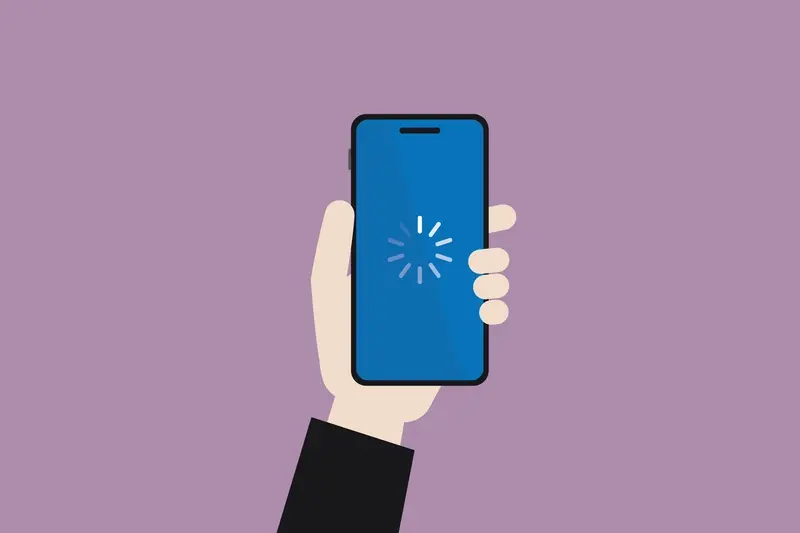What's the Difference Between App Performance and User Experience?
You've just launched your mobile app and the downloads are looking promising. Users are installing it, opening it for the first time, and then... nothing. They disappear. Your retention rates are terrible, your app store reviews mention crashes and slow loading times, and you're left wondering what went wrong. Sound familiar? This happens to more app developers than you might think, and it usually comes down to a fundamental misunderstanding of two concepts that are often confused: app performance and user experience.
Here's the thing—many people use these terms interchangeably, but they're actually quite different. App performance is about the technical stuff: how fast your app loads, how smoothly it runs, whether it crashes or not. User experience goes much deeper than that; it's about how people feel when they use your app, whether they can achieve their goals easily, and if they want to come back for more. The confusion happens because these two areas overlap so much that poor performance almost always leads to poor user experience.
Performance is what your app does behind the scenes, but user experience is what your users remember long after they've put their phone down
Understanding this difference is absolutely critical if you want to build a successful mobile app. You can have the most beautifully designed interface in the world, but if your app takes thirty seconds to load, users won't stick around to appreciate it. Equally, you can have lightning-fast performance, but if users can't figure out how to complete basic tasks, they'll still leave frustrated. Getting both right requires understanding what each one means, how they work together, and most importantly, how to measure and improve them using the right quality metrics.
What Is App Performance?
App performance is basically how well your mobile app works when people use it. Think of it like this—when you tap a button, how quickly does something happen? When you scroll through a list, does it feel smooth or choppy? When you open the app, does it load straight away or do you sit there waiting? All of these things are part of app performance.
Now, I know what you're thinking—surely it's just about speed, right? Well, not quite. Speed is a big part of it, but there's more to the story. App performance covers everything from how fast your app starts up to how much battery it uses whilst running. It includes whether your app crashes (which nobody wants!) and how well it handles different situations like poor internet connections.
The Main Parts of App Performance
When we talk about app performance, we're really looking at several different areas that work together:
- Load times—how long it takes for screens and content to appear
- Response times—the delay between tapping something and seeing a result
- Smoothness—whether animations and scrolling feel fluid
- Stability—how often the app crashes or freezes
- Resource usage—how much battery, memory, and data the app consumes
- Network handling—how well the app works with slow or patchy internet
Why Performance Matters More Than You Think
Here's the thing—people have become incredibly impatient with slow apps. If your app takes more than a few seconds to load, many users will simply close it and try something else. Poor performance doesn't just annoy users; it can completely kill an otherwise brilliant app idea. The good news is that performance can be measured and improved, which we'll explore in later chapters.
What Is User Experience?
User experience—or UX as we call it in the industry—is basically how someone feels when they're using your mobile app. It's not just about whether the app works or looks pretty; it's about the entire journey from the moment they tap your app icon to when they close it and everything in between.
Think of it this way: when you use an app, you're not just pressing buttons and swiping screens. You're trying to achieve something—maybe you want to order food, check the weather, or send a message to a friend. User experience is about how easy, enjoyable, and satisfying that whole process feels to you.
The Building Blocks of Good UX
Good user experience isn't just one thing; it's made up of several parts working together. The visual design matters—nobody wants to look at an ugly app. But so does how logical the navigation feels, how quickly things load, and whether you can actually find what you're looking for without getting frustrated.
Here's what gets interesting though: user experience is completely subjective. What feels brilliant to one person might feel confusing to another. That's why we spend so much time testing apps with real users rather than just assuming we know what works.
The best way to understand your app's user experience is to watch real people use it. You'll spot problems you never knew existed and discover solutions you wouldn't have thought of otherwise.
Why UX Matters More Than Ever
These days, people have millions of apps to choose from. If yours is confusing or frustrating to use, they'll simply delete it and try something else. Good user experience keeps people coming back; bad user experience sends them straight to your competitors.
How Performance Affects User Experience
When your app performs well, users barely notice it—and that's exactly what you want. They tap a button and something happens straight away. They scroll through content smoothly. They complete tasks without frustration. Performance acts as the invisible foundation that supports every single interaction people have with your app.
But when performance starts to slip, the relationship between your app and its users changes dramatically. A slow loading screen doesn't just waste a few seconds; it creates doubt in the user's mind about whether your app is worth their time. Laggy animations make the whole experience feel cheap and unfinished, even if you've spent months perfecting the design.
The Ripple Effect of Poor Performance
Users don't separate performance from experience—they're the same thing in their minds. If your app takes too long to start up, they'll assume it's broken or low quality. If it crashes during an important task, they'll lose trust in your entire service. These aren't just minor inconveniences; they shape how people feel about your brand.
Think about it from a business perspective too. Poor performance directly impacts your app store ratings, user retention rates, and ultimately your revenue. Users who experience performance problems are far more likely to uninstall your app and leave negative reviews that warn others away.
The good news? When you get performance right, users become more engaged, complete more tasks, and recommend your app to others. Performance isn't just a technical requirement—it's your secret weapon for creating genuinely delightful user experiences that keep people coming back.
Common Performance Problems That Hurt Users
Over the years, I've seen the same mobile app performance issues pop up time and time again. These problems don't just annoy users—they drive them away completely. Let's look at the most common culprits that can turn your brilliant app idea into a user's worst nightmare.
Slow Loading Times
When your mobile app takes forever to load, users will abandon it faster than you can say "please wait". Most people expect apps to open within three seconds or less. If your app is still showing a loading screen after that, you've probably lost them. This happens when apps try to download too much data at once or when the code isn't optimised properly.
Crashes and Freezes
Nothing ruins user experience quite like an app that suddenly stops working. Crashes happen when the app runs out of memory, encounters a coding error, or tries to do too many things at once. Freezes are just as bad—your app is technically running, but it won't respond to touches or gestures.
Users will forgive a lot of things, but they won't forgive an app that doesn't work when they need it most
Battery drain is another silent killer of mobile app success. When users notice your app is eating through their battery life, they'll delete it without hesitation. Poor network handling also creates major headaches—apps that don't work offline or can't handle slow internet connections will frustrate users who are constantly on the move. These quality metrics directly impact how people feel about using your app, which is why understanding why apps fail should always be a top priority.
How To Measure App Performance
Measuring app performance isn't as complicated as you might think—but it does require knowing what to look for. After years of working with apps that perform brilliantly and others that, well, don't, I've learned that the key metrics fall into a few clear categories.
Speed metrics are your bread and butter. App launch time tells you how long users wait before they can actually use your app—anything over three seconds and you're in trouble. Screen load times matter just as much; nobody wants to stare at a loading spinner whilst trying to complete a task. Network response times show how quickly your app talks to servers, which affects everything from login to data updates.
Technical Metrics That Matter
Memory usage is huge—apps that gobble up too much RAM get killed by the operating system, which means frustrated users. Battery drain is equally important; if your app empties someone's phone battery, they'll delete it faster than you can say "optimisation". CPU usage spikes can make devices hot and sluggish, which users definitely notice.
Real-World Performance Data
Crash rates and error frequencies give you the hard truth about stability. Frame rates tell you whether animations are smooth—anything below 60fps on modern devices feels janky. Database query times affect how quickly users can access their information.
The tools for measuring these metrics are built right into development platforms—Android Studio's profiler, Xcode Instruments, and third-party solutions like Firebase Performance Monitoring. Whether you're using modern development approaches or traditional methods, these tools track everything automatically, giving you real data from real users rather than guesswork. The key is setting up monitoring from day one, not after problems appear.
How To Measure User Experience
Measuring user experience in your mobile app isn't like checking app performance—you can't just look at load times and call it a day. User experience is about feelings, behaviours, and how people actually interact with your app. The good news? There are reliable ways to track this stuff.
The most telling metrics come from watching what users do, not what they say. Session duration tells you if people stick around; bounce rates show if they leave immediately. User retention is probably the most important metric—if people keep coming back to your app, you're doing something right. Daily active users (DAU) and monthly active users (MAU) give you the bigger picture of engagement.
Direct User Feedback Methods
Sometimes you need to ask users directly what they think. In-app surveys work well when kept short—nobody wants to fill out a lengthy questionnaire when they're trying to use your app. App store reviews give you honest feedback, though you'll need thick skin for some of it! User testing sessions where you watch people use your app can be eye-opening; you'll spot problems you never knew existed.
Track your app's Net Promoter Score (NPS) by asking users how likely they are to recommend your app to friends. It's a simple question that reveals a lot about user satisfaction.
Key UX Metrics To Track
- Task completion rate—can users actually do what they came to do?
- Time to complete tasks—are users getting stuck somewhere?
- Error rates—how often do things go wrong?
- User flow drop-off points—where do people give up?
- Feature adoption rates—which parts of your app get ignored?
The secret is combining these metrics with performance data. An app that loads quickly but confuses users won't succeed; neither will an intuitive app that crashes constantly. Learning from negative feedback can provide valuable insights into both performance issues and user experience problems that you might have missed.
Conclusion
After working with hundreds of mobile apps over the years, I can tell you that understanding the relationship between performance and user experience is what separates successful apps from failed ones. They're not the same thing—but they work together like two parts of the same machine.
Performance is the technical stuff; how fast your app loads, how smoothly it runs, whether it crashes or not. User experience is about how people feel when they use your app—whether they enjoy it, find it useful, and want to come back. Poor performance will always damage user experience, but good performance alone won't guarantee a great user experience.
The apps that really succeed get both sides right. They load quickly and run smoothly, but they also solve real problems for users in ways that feel natural and enjoyable. Users don't separate these things in their minds—they just know whether an app works well for them or not.
If you're building an app, start by making sure it performs well. Use the measurement tools we've discussed to track loading times, memory usage, and crash rates. But don't stop there. Watch how real people use your app, gather their feedback, and measure engagement metrics to understand the full picture.
Remember, users have thousands of apps to choose from. They'll delete yours within seconds if it doesn't work properly or meet their needs. Getting both performance and user experience right isn't just nice to have—it's what keeps your app alive in a competitive market.
Share this
Subscribe To Our Learning Centre
You May Also Like
These Related Guides

What Are the Core Principles of User-Centred Design?

What's Normal When It Comes To App Loading Times?



